It was very early in the morning, U.S. time, and the 4-week U.S. Treasury bill then being traded all over Asia suddenly captured a huge bid. At around 3:30 am EDT, May 11, the equivalent yield on this particular short-term instrument ticked lower and lower. Two hours later, around 5:30 am, the rate had fallen below 0.50 percent (50 basis points) from around 0.52 percent where it had been trading since the afternoon before.
This scramble for bills didn’t stop there. On that particular day, the bidding would keep going in irregular intervals until the 4-week yield finally reached its ultimate daily low of 0.487 percent just before 8:30 am.
Big deal, right? A couple of basis points early in the morning during the non-U.S. session might seem like an irrelevant quirk, some technical glitch only the deepest of insiders should care about.
Treasury bill rates don’t really move in chunks like this, though, especially the shortest-term instrument. And given the Federal Reserve’s rate-hiking plans, rates shouldn’t be going down at all. If anything, they’re supposed to be moving higher in tandem with the FOMC’s alternate benchmarks.
Financial market players who buy these government securities have a choice, or several, as the case may be. Among those, rather than purchase and hold an overvalued, lower-return T-bill they might instead invest cash with the Federal Reserve in one of its alternatives.
The primary of those is something called reverse repo. Basically, the Fed offers an interest rate to eligible counterparties, including banks and money market funds, which policymakers hope will establish a floor for all money rates—including Treasury bills.
Put yourself in the shoes of one of these institutions: should the reverse repo rate (RRP) be offered at, say, 0.80 percent as it is currently, then it stands to reason you would never accept any comparable opportunity which paid less. After all, investing cash with the Federal Reserve collateralized by some U.S. Treasury security (this is the reverse repo) is the absolute safest short-term deal you’ll ever find.
Yet, there are global “investors” who, at times, are so desperate for especially Treasury bills they’re eager to receive far, far less return on them. The front bill, 4-week, is, as I already noted, well below the 0.80 percent offered at the reverse repo window. The next in line, the 8-week tenor, is itself below the RRP, while the 3-month maturity is barely above (with another 50-bps rate hike scheduled in about a month making it highly unattractive at these levels).
Furthermore, on far too many mornings like May 11, these same financial participants will bid even more for what’s already so expensive. Why wouldn’t they just park their cash at the RRP?
This whole thing cannot be about investment characteristics and comparisons of pure returns. There must be some other kind of value, some other utility for Treasury bills that make them more valuable to purely financial agents such that they’ll pay dearly for these specific securities, accepting a much lower return.
Collateral.
Funding markets across the entire global dollar system require security in the form of collateral. Treasury instruments including notes and bonds are the best kind. And Treasury bills are the best of the best because they are the most regularly and fully liquid of the entire government family.
Repo counterparties, those lending cash and accepting collateral, only care about that; the liquidity characteristics of the collateral coming their way. This is simply because if the cash borrower should default the next day, the cash lender has the right to seize the collateral and sell it to be made whole again.
If the collateral posted then seized is of poor(er) quality, the cash lender can’t necessarily depend as much on its price even in short run situations. It gets even more dubious when the market for similar poor-quality assets doesn’t function well; raising further doubts about less quality collateral securities.
At times like that, cash lenders require either more poor-quality collateral for the same amount of cash borrowed, or, preferably from their perspective, they could and often do demand better quality collateral such as T-bills.
Working backward, then, when funding market participants are highly motivated to seemingly overpay for instruments that also happen to be the most pristine form of collateral, we easily, reasonably infer how poor-quality securities are being avoiding, thereby herding much of the global money marketplace toward instruments like bills; to the point that, on occasion, typically from Asian trading into the morning, there are these outright scrambles for them.
There are several reasons this happens, and not nearly enough space here to fully describe them all. For our narrower purposes, the problem most often relates to something called securities lending. Hidden away from prying eyes deep down in these global monetary shadows, financial participants will engage in collateral-for-collateral swaps along with more complicated forms of “collateral transformations” (a three- perhaps four-legged repo, for one).
What might typically happen is lower quality securities are swapped for better quality securities, which are already borrowed, and then the swapped better-quality assets get reused in secured financing transactions. To put it very simply, collateral transactions stretch out into long chains of reuse and repledging, at times rehypothecation, whereby the end result is how collateral just isn’t what it appears to be.
Underlying those chains of reuse and repledging is quite often, frankly, junk assets. It can work fine enough when conditions are believed to be generally good and benign (such as 2017, or the first half of 2021 when vaccines and government spending were viewed so positively), those periods dealers transforming this junk are relatively sanguine about its liquidity prospects.
Should doubts and concerns creep in (as in 2018, or the latter half of 2021), should anyone question those prospects, it can trigger a chain reaction of revaluation and adjustments (this is what really happened in 2007 and 2008, by the way) which eventually leads to all kinds of negative and harmful consequences in money and finance then the real economy.
All the while those at the Federal Reserve sit by flummoxed and confused because global collateral chains don’t compute in the official worldview.
The more desperate the system might appear to be for the best, most pristine collateral, the more you know the hidden collateral system is experiencing just that kind of negative potential, a situation which should sound entirely too familiar given what’s been happening lately—which you’ve probably been told is angst about rate hikes.
As Treasury bills continue to be so wildly “overpriced”, it should be noted that the price and indicative liquidity of all kinds of junk has become, shall we say, questionable (seen in rising spreads; above). In short, there is every indication of a serious collateral problem across the global reserve money system right now, one that has been building since the middle of last year.
And it has nothing whatsoever to do with rate hikes. This is a real money problem.
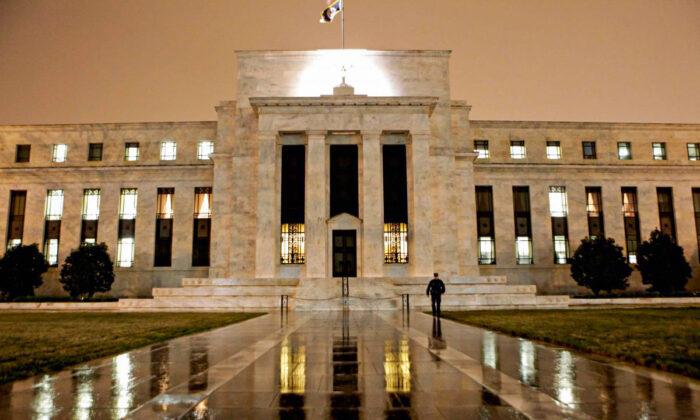

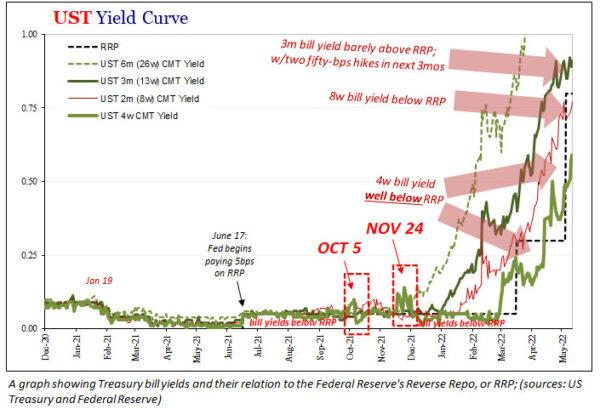
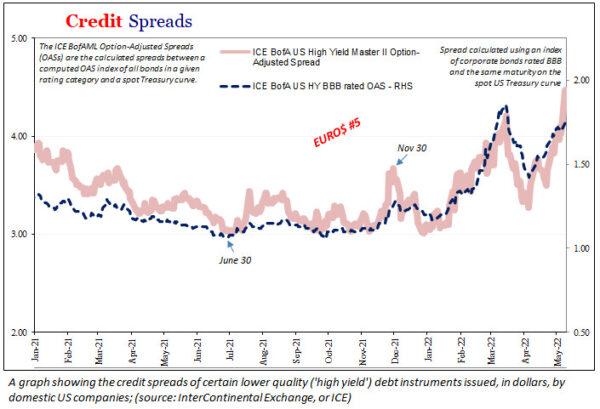
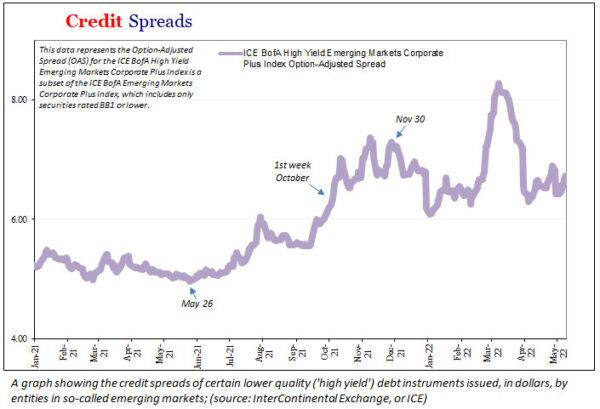
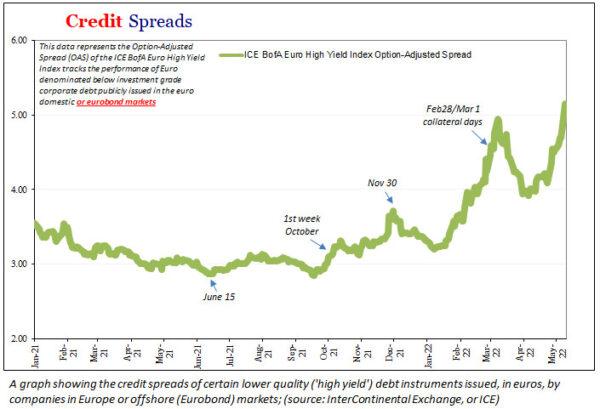
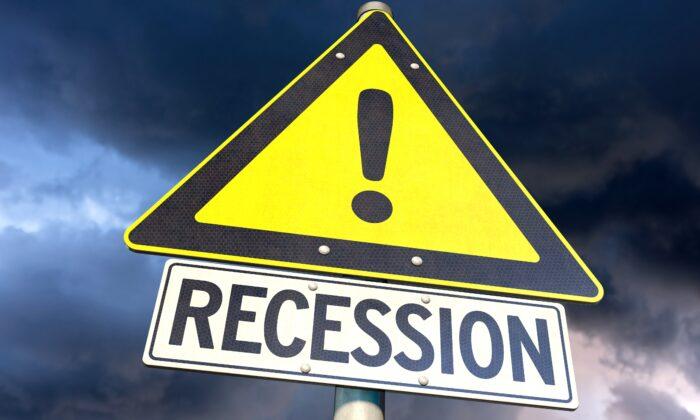
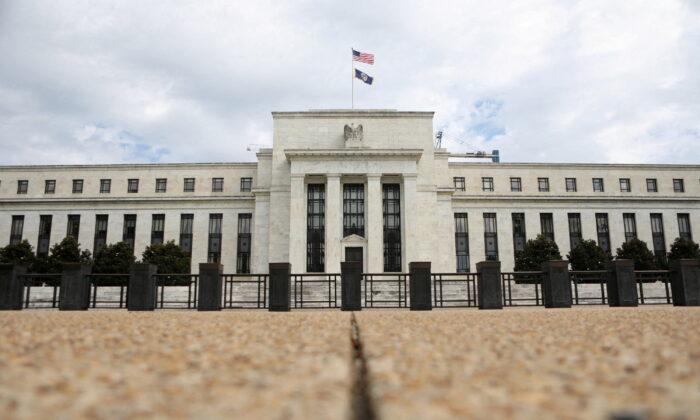


Friends Read Free